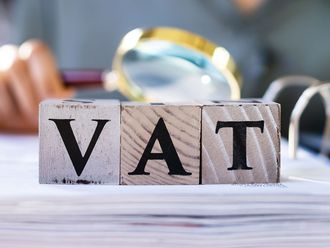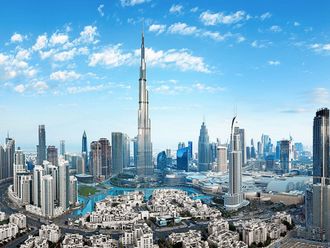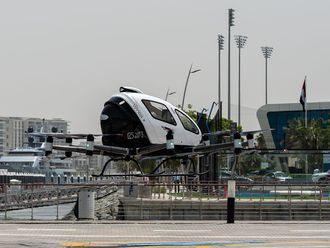For decades I’ve been hearing about India’s need to modernise its infrastructure.
Infrastructure is crucial for manufacturing, since various inputs need to travel quickly and reliably between and within cities in order to create stable supply chains. Manufacturing, in turn, is central to development — it moves people from farms to cities, where they become more productive, and it helps local companies absorb advanced technology from the rest of the world.
Although manufacturing is declining in importance in the global economy, there is still a chance that India can hop on the manufacturing-based development bus. At a minimum, it’s definitely worth a shot. And to do so, India needs much better infrastructure — roads, railways, airports and power grids.
Economic research even supports this hypothesis — India’s Golden Quadrilateral highway project, started in 2001, has helped Indian companies and boosted productivity.
Yet India needs to do a lot more in the infrastructure department. A 2013 report by PricewaterhouseCoopers puts it thus: “Rapid industrialisation is intensifying the strain on [India’s] unreliable networks for electricity and water. The railway system — already infamously overcrowded — faces rising demand for freight capacity.
And the government has fallen far short of its plans to build 20 kilometres of roads each day — an urgent requirement in a nation where 65 per cent of all freight is transported by road, and where traffic is so severe that the maximum highway speed for trucks and buses is only 30-40km/hr. The need to upgrade India’s infrastructure is especially acute in huge cities such as Mumbai, New Delhi, Kolkata and Bengaluru ... [M]assive investment will be required in everything from metro systems to clean water supplies, power generation to affordable housing.
Why is India such an infrastructure laggard, always struggling to patch things together, while China — the world’s other supergiant developing country — races ahead? The traditional answer is that democracy is holding India back. China, we are told, was able to build top-notch road, rail and water transport networks because, as a dictatorship, it could simply order peasants to move out of the way.
Many take this as a received truth — India, they say, simply has to choose between democracy and efficient government.
But this story, convincing as it sounds, isn’t right. History shows that it’s possible for democracies to build effective infrastructure. Perhaps the best example is Japan.
Japan is a strongly democratic nation, consistently receiving high marks in terms of political freedoms. And it’s impossible to deny that the country has built one of the world’s best infrastructure systems. It’s shocking how easy it is to get from Point A to Point B in Japan, whether you’re a business traveller riding a high-speed train or a trucker driving down the highway.
One general lesson many people took from Japan’s success — at least, before the Japanese economy stalled out in the 1990s — is the power of technocracy. If they work efficiently, technocracies allow democratically elected legislatures to give small groups of experts the ability to make policy in the short term, while keeping them accountable in the long term.
If the technocrats overstep their bounds and do something strongly contrary to the public’s wishes, the legislature can rein them in. But most of the time they can operate with a long leash, getting things done quickly and decisively. During its early development, Japan combined powerful ministries, with members recruited from top schools, with powerful public corporations.
India seems to be taking that general lesson to heart. The government of Prime Minister Narendra Modi has established a National Investment and Infrastructure Fund, for which it promises to recruit the “best talent in the world”. With India’s huge population and deep talent pool, it will not have to look far. In addition, Modi has promised $1 trillion of infrastructure spending by 2017.
Of course, bureaucracies are not omnipotent. Some researchers claim that Japan’s system of competition between government ministries has reduced the effectiveness of Japan’s infrastructure programmes in recent years. And Japan has overbuilt infrastructure, according to a recent McKinsey report, in a misguided effort to stimulate growth.
As for those vaunted public corporations, many are now unprofitable.
That said, India is still poor enough that a powerful elite bureaucracy may be an effective way of getting a fractious democracy to build modern infrastructure. In addition to copying Japan’s classic approach, India can also leverage Japanese expertise more directly, by hiring Japanese companies to build its roads and rails.
Moreover, Japan’s Prime Minister Shinzo Abe is trying to foster an alliance with India in order to hedge against the rise of China, so, Japan’s government may be prepared to offer India cheap infrastructure financing. Abe recently unveiled a $110 billion funding initiative to help poor countries in Asia — of which India is by far the biggest — invest in infrastructure. And Japanese institutional investors, facing very low yields in Japan, have a big incentive to buy higher-yielding Indian development bonds.
So in many ways, Japan may be key to solving India’s infrastructure woes — as an institutional model, as a source of expertise and as a source of funds.
The writer is an assistant professor of finance at Stony Brook University.












